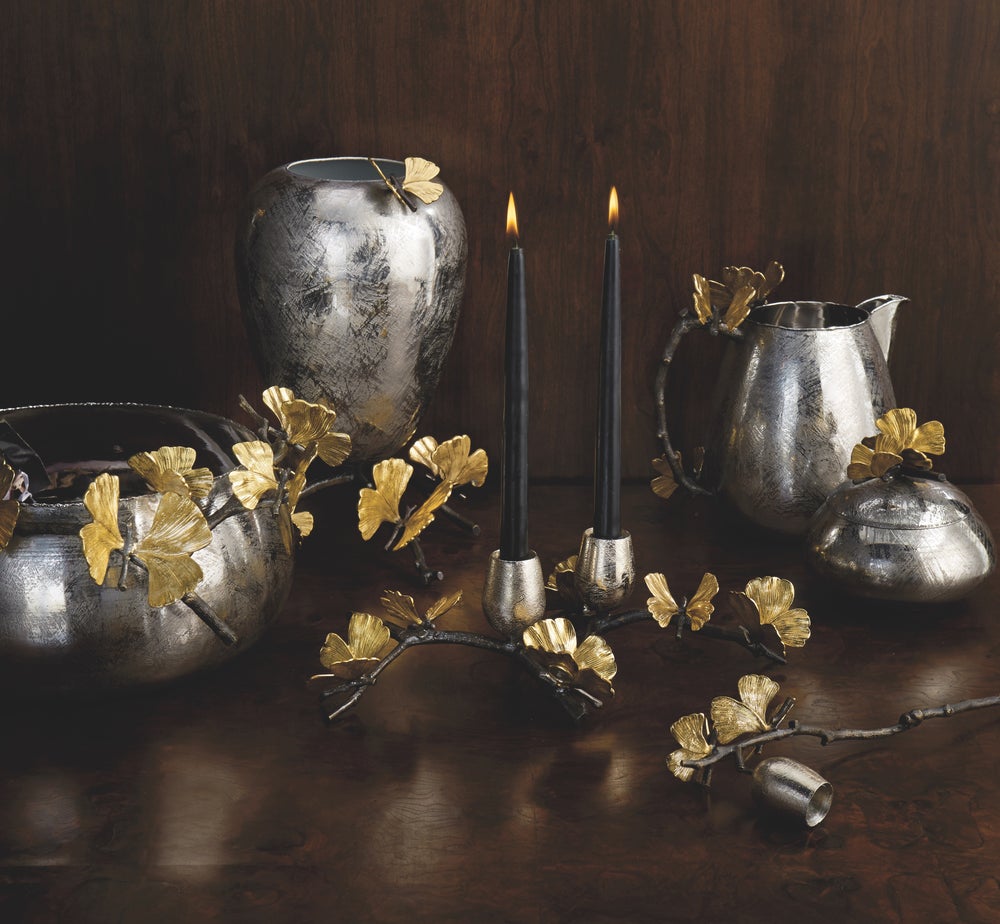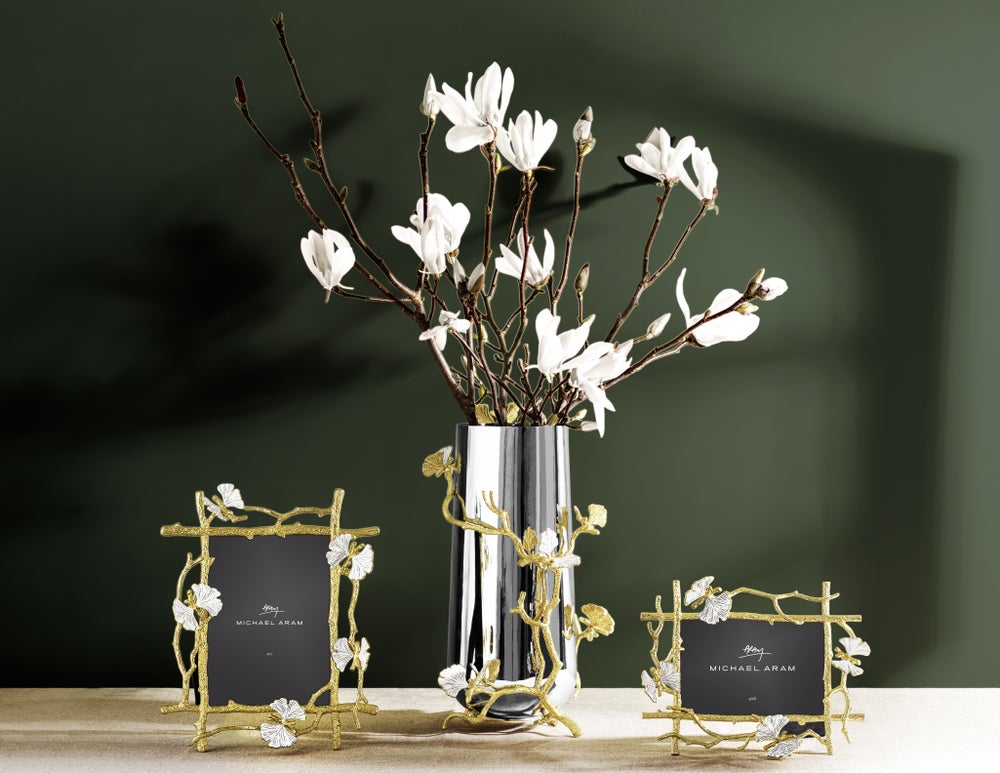He Started an 'Accidental' Business at 25 With Just $2,000 — Then Gave His Product to the Pope: 'Anyone Can Be an Entrepreneur' Michael Aram, founder of the namesake luxury home and jewelry brand, learned the art of metalworking in India — and used it to launch a global brand.
By Amanda Breen Edited by Jessica Thomas
Key Takeaways
- Defying the industrial design trend of the late '80s, Aram's unique, handcrafted pieces gained the attention of luxury retailers and an international clientele.
- Aram credits his brand's success to grassroots entrepreneurial spirit, mixed with a dose of ignorance and luck, and encourages modern creators to seize online opportunities.
In 1989, 25-year-old Michael Aram lived in a studio apartment on Christopher Street in New York City, where he was designing books and posters at the Metropolitan Museum of Art by day and drawing and painting by night. During that time, the young artist happened to befriend some people from New Delhi, India, and he decided to visit them — a choice that would change his life and lead him to become the founder of his namesake luxury home and jewelry brand.

Image Credit: Courtesy of Michael Aram
When Aram arrived in India and saw local craftspeople at work, "It was like stepping back into Biblical times," he says. Aram was particularly drawn to the metalworkers, inspired by their artisanship — even though the pieces they made were basic and utilitarian.
"I just thought, I want to work with these people and create objects that are beautiful and artful," Aram explains. "But because they were making objects of function, my head went to decorative arts — How do we make that bowl beautiful or that forged item functional?"
Related: He Launched His Creative Side Hustle Out of a Garage. Now It's Worth $225 Million.
So Aram learned the craft while he was in India and put together a five-piece collection, including server sets with twigs found on his morning walks cast in brass and plated in silver and bowls forged in stainless steel with hand-cut edges and "big hammer marks." He took the pieces back to New York, and although some of his friends in the city encouraged him to sell his work, others weren't as impressed.
"My friends in India made fun of me and said, 'Oh, you and your rotten metal. That looks like something that cows would eat out of,'" Aram says. "They were very craggy and handmade and artisanal." At the time, the prevailing design aesthetic was "high-tech," Aram explains — "Everything was brushed metal, industrial-looking." The handmade element "ubiquitous in the design world today" wasn't in fashion.

Image Credit: Courtesy of Michael Aram. Pieces from the Butterfly Ginkgo collection launched in 2007.
"'Michael, if you can make this, I can sell it.'"
Still, despite having just $2,000 in his bank account, Aram opted to listen to his supporters and give the venture a go. He found a sales representative in SoHo who worked with designers making metal art, furniture, jewelry and handbags. There were about five artists in the group, Aram says.
"And [the representative] said to me, 'Michael, if you can make this, I can sell it,'" Aram recalls.
So Aram set out to make it. He emptied the $2,000 from his bank account and traveled to India; he spent $200 at a stopover in Paris, arrived with $1,800 in his pocket and got to work. He made different amounts of pieces—"50 of this, 20 of this, 10 of that"—and shipped them to New York.
The sales representative took the pieces to a design show, which Aram flew back for. By the end of the event, they had substantial orders. One of the pieces even landed on the cover of Neiman Marcus Magazine.
"I was 25 years old. It was horrifying. But we made it all; we shipped it all.
With an order for 16,000 cutlery sets waiting to be fulfilled, Aram needed cash to create his designs. His parents were able to guarantee him a loan for about $50,000. "I was 25 years old," Aram says. "It was horrifying. But we made it all; we shipped it all. And [after that point], we never had to borrow money again. We just put it back into the business."
That strategy helped the business reach the global acclaim it enjoys today as it approaches its 35th anniversary. Not only has the brand attracted a noteworthy audience, including the English royal family and the Pope, who was gifted a Noah's Ark sculpture in 2016, but its products are also featured in the dining rooms at Four Seasons hotels and the home departments of renowned retailers including Neiman Marcus and Bloomingdale's.
Additionally, the company boasts flagship stores in New York, Miami and Canoga Park, California and is currently expanding into a new hub in Valencia, Spain.

Image Credit: Courtesy of Michael Aram. Pieces from the Butterfly Gingko Gold collection launched in July 2024.
Related: 10 Growth Strategies Every Business Owner Should Know
"I run my business like my grandfather would have run his business."
Although Aram always loved business and looked at it like design, "making something from nothing," he calls himself "an accidental entrepreneur." He's owned his business for more than three decades, yet still considers his approach a "very unconventional" one. "I run my business like my grandfather would have run his business, in the old way," Aram says. "It wasn't all about leverage and partners and 3PL and not owning it; it was very much in the old way of making."
"I like to own things," Aram adds. "I like to manage things, and I like to be as vertical as possible. I don't know whether it's a smart move. It's just how I've done it." The 100% foreign-owned company continues to operate in India, which Aram sees as "very much the heart of the business" to this day.
According to Aram, many brands put marketing and PR on a pedestal, but he's always been driven by objects, believing that the product will speak for itself and tell the story, even decades down the line.
For a time, his office was above the New York store, and he "loved hearing what customers were saying about the products," and how sometimes when he'd introduce himself, people would refer to themselves as "collectors" rather than "customers." "I don't tell them to say that," Aram says. "That's how they identify themselves. Because they feel that there's a specialness."
Related: Are You Really Listening to Your Customers? Probably Not, But You Should.
"So on one level now, anyone can be an entrepreneur."
"I never thought for one second when I made those five funny pieces that this would be my life," Aram says. "But India's taught me so much and has led me so far." Aram credits much of his success to starting out as a young entrepreneur who didn't "know better" and was willing to push on despite significant hurdles — like the fact that he couldn't have a bank account in India or legally operate a business in the country prior to economic liberalization.
"Ignorance was my best tool," Aram admits. "Ignorance and luck."

Image Credit: Courtesy of Michael Aram. Pieces from the Butterfly Gingko Gold collection launched in July 2024.
These days, it's generally more difficult for an unknown designer to break into retail. According to Aram, stores aren't able to be as agile or take as many risks as they did back then, which means the barrier to entry is high. However, where one door might be closed, Aram sees another that's wide open for aspiring entrepreneurs — online platforms like Etsy, Amazon and Facebook Marketplace.
"You could make [something] in your kitchen and sell it on your computer and maybe never leave the house," Aram says. "So on one level now, anyone can be an entrepreneur, and I think that's what's so incredible."
Want to see more stories like this? Join Entrepreneur+ and get all access to our site for less than $1/week.
Subscribe Now









